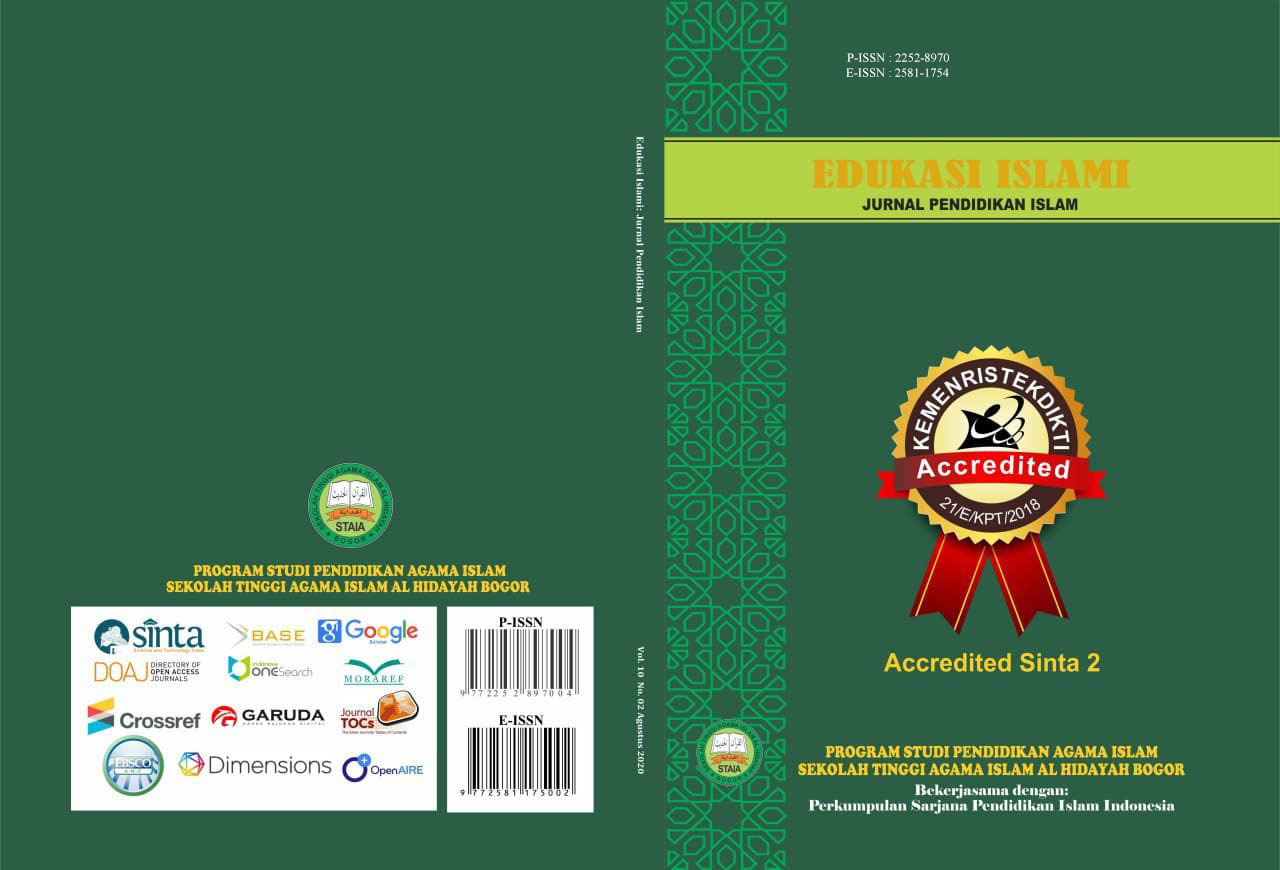Knowledge of Tenant Employees in Fire Emergency Response Efforts at Airport Terminals: A Study of Its Influence
DOI:
https://doi.org/10.30868/ei.v12i001.6361Keywords:
Airport Terminal, Fire Emergency Management, Influence Study, Tenant EmployeesAbstract
References
Aeron Satria Bayu Aji, K. M. I. T. (2020). Rancangan Clean Agent Fire Suppression System Di Ruang Panel Chiller Terminal 1 Bandar Udara International Juanda Dengan Luas Ruangan 29,43 METER. Jurnal Ilmiah Aviasi, Vol. 13 No. 01 (2020): Langit Biru: Jurnal Ilmiah Aviasi.
Agustin, R., Kurniawan, B., & Suroto, S. (2016). Analisis Implementasi Unit Penanggulangan Keadaan Darurat Kebakaran Di Mall X, Jakarta. Jurnal Kesehatan Masyarakat (e-Journal), 4(3).
Amin, G. I. (2010). Analisis Pemenuhan Sistem Tanggap Darurat Kebakaran Diarea Produksi PLTU PT PJB Up Muara Karang Jakarta Tahun 2010. In Ilo (Vol. 11, Issue 2).
Dhani, M. R., & Rachmat, A. N. (2019). Pembentukan Tim Tanggap Darurat Sebagai Penerapan Sistem Manajemen Keselamatan Dan Kesehatan Kerja (SMK3) di Institusi Pendidikan. Heuristic, 16(2). https://doi.org/10.30996/he.v16i2.2969
Erismawati, N. K. L., & Adhi, K. T. (2023). Faktor Yang Berhubungan Dengan Kesiapsiagaan Kebakaran Pada Pekerja Di Bandar Udara Internasional I Gusti Ngurah Rai Bali. Archive Of Community Health, 10(1). https://doi.org/10.24843/ach.2023.v10.i01.p04
Fajriati, P., Roedavan, R., & Siradj, Y. (2021). Simulasi Penanganan Kebakaran Ringan Untuk Fakultas Ilmu Terapan Berbasis Virtual Reality. E-Proceeding of Applied Science, 7(6).
Faturrahman, & Eny Sri Haryati. (2023). Pengaruh Stres Kerja Terhadap Kinerja Karyawan Pertolongan Kecelakaan Penerbangan Dan Pemadam Kebakaran (Pkp-Pk) Di Bandar Udara Internasional Adisutjipto Yogyakarta. Jurnal Mahasiswa: Jurnal Ilmiah Penalaran Dan Penelitian Mahasiswa, 5(2). https://doi.org/10.51903/jurnalmahasiswa.v5i2.616
Fitri Sari Dewi, & Iratna Pangalih. (2019). Analisis Manajemen Emergency Response And Preparedness Di PT X Kota Batam. Kesehatan, 1(1).
Gani, M., Histiarini, A. R., Ahistasari, A., & Wariori, R. Y. (2023). Analisis Resiko Kebakaran Di Bandara RR Menggunakan Metode FMEA. Jurnal Teknik Industri, 9(1).
Iraniana, R. (2009). Upaya Pencegahan dan Penanggulangan Bahaya Kebakaran sebagai Antisipasi Dini Terhadap Bahaya Kebakaran di Pusdiklat Migas Cepu. Universitas Sebelas Maret.
Kementerian Tenaga Kerja. (1999). Kepmenaker 186/1999 Unit Penanggulangan Kebakaran di Tempat Kerja. Kepmenaker, 186.
Kharisma Sevi Nur Safitri, & Rahimudin. (2022). Analisis Kelayakan Fasilitas Unit Pertolongan Kecelakaan Penerbangan Dan Pemadam Kebakaran (PKP-PK) Di Bandar Udara Dewandaru Karimunjawa. Jurnal Publikasi Manajemen Informatika, 1(3). https://doi.org/10.55606/jupumi.v1i3.511
Kustori, K. (2017). Rancangan Alat Kontrol Pemadam Kebakaran Otomatis Berbasis Mikrokontroler Arduino Mega Dengan Menggunakan Sensor Asap, Suhu dan HMI (Human Machine Intrface) di Bandar Udara. Jurnal Penelitian, 2(3). https://doi.org/10.46491/jp.v2e3.91.155-162
Lubis, Z. M., Soemirat, J., & Permadi, D. A. (2019). Analisis penerapan sistem tanggap darurat kebakaran di PT X. Jurnal EnviroSan, 2(2).
Lukiana, L. (2017). Pemeliharaan Kendaraan PKP-PK di Bandar Udara Hang Nadim-Batam. WARTA ARDHIA, 41(2). https://doi.org/10.25104/wa.v41i2.147.81-96
Masruri, A., Oktafino, D. D., Munawwar A, H., Alfiansyah, M. D., & Hendra, O. (2021). Pengaruh Hubungan Sosial Terhadap Produktivitas Kerja unit PKP-PK. Langit Biru: Jurnal Ilmiah Aviasi, 14(03). https://doi.org/10.54147/langitbiru.v14i03.501
Nugraha, W., Abdullah, A., Sutiyo, S., Hendra, O., & Marwan, I. J. (2021). Basic PKP-PK Initial Training Sebagai Sarana Peningkatan Pelayanan Gawat Darurat di Bandar Udara. Darmabakti: Jurnal Inovasi Pengabdian Dalam Penerbangan, 1(2). https://doi.org/10.52989/darmabakti.v1i2.25
Oktarina, Y., Subandi, A., Nurhusna, N., & Mekeama, L. (2023). Pelatihan Tanggap Darurat Bencana Kebakaran Pemukiman. RESWARA: Jurnal Pengabdian Kepada Masyarakat, 4(1). https://doi.org/10.46576/rjpkm.v4i1.2365
Rusman, Z., Matario, A. W., Amir, M., & Zakaria, A. (2021). Analisis Penerapan Sarana Penyelamatan Dan Sistem Proteksi Pasif Terhadap Bahaya Kebakaran (Studi Kasus : Gedung Menara Bosowa Makassar). Journal of Applied Civil and Environmental Engineering, 1(1). https://doi.org/10.31963/jacee.v1i1.2671
Santosa, M. F. D., & Rudyarti, E. (2022). Tingkat Pengetahuan Kesiapsiagaan Bencana Terhadap Tanggap Darurat Kebakaran Pada Mahasiswa Tingkat Akhir Universitas X. Cakrawala Medika: Journal of Health Sciences, 1(1). https://doi.org/10.59981/cmj.v1i1.2
Suryani, E., Wari, W. N., & Hardiyanti, S. A. (2019). Edukasi dan Pelatihan Simulasi Tanggap Darurat Bencana Kebakaran Bagi Santri di Banyuwangi. JMM (Jurnal Masyarakat Mandiri). https://doi.org/10.31764/jmm.v0i0.1150
Syaifuddin,Harninto, U. sit. (2011). Gambaran Pelaksanaan Tanggap Darurat Sebagai Upaya Penanggulangan Bencana Di RSUD Dr. Moewardi Surakarta. Gambaran pelaksanaan Tanggap Darurat Sebagai Upaya Penanggulangan Bencana di RSUD dr. Moewardi Surakarta.
Yogik Hendra Saputra. (2022). Analisis Kinerja dan Pengembangan Karir Karyawan Pada Unit Pertolongan Kecelakaan Penerbangan dan Pemadam Kebakaran (PKP-PK) di Bandar Udara Internaasional Adi Soemarmo Solo. Jurnal Ground Handling Dirgantara Vol.4, No.1, Juli 2022, 4(1).
Yuliati. (2020). Manajemen penanggulangan bencana. Modul Disaster Nursing (Nsa 736), 3.
Yusuf, M., & Kusumawati, D. (2019). Pengkajian Pemeliharaan Fasilitas PKP-PK Di Bandar Udara Adi Sucipto - Yogyakarta. Warta Penelitian Perhubungan, 25(2). https://doi.org/10.25104/warlit.v25i2.710
Downloads
Published
Issue
Section
Citation Check
License

This work is licensed under a Creative Commons Attribution 4.0 International License.
Authors who publish with this journal agree to the following terms:
- Authors retain copyright and grant the journal right of first publication with the work simultaneously licensed under a Creative Commons Attribution License that allows others to share the work with an acknowledgment of the work's authorship and initial publication in this journal.
- Authors are able to enter into separate, additional contractual arrangements for the non-exclusive distribution of the journal's published version of the work (e.g., post it to an institutional repository or publish it in a book), with an acknowledgment of its initial publication in this journal.
- Authors are permitted and encouraged to post their work online (e.g., in institutional repositories or on their website) prior to and during the submission process, as it can lead to productive exchanges, as well as earlier and greater citation of published work (See The Effect of Open Access).









